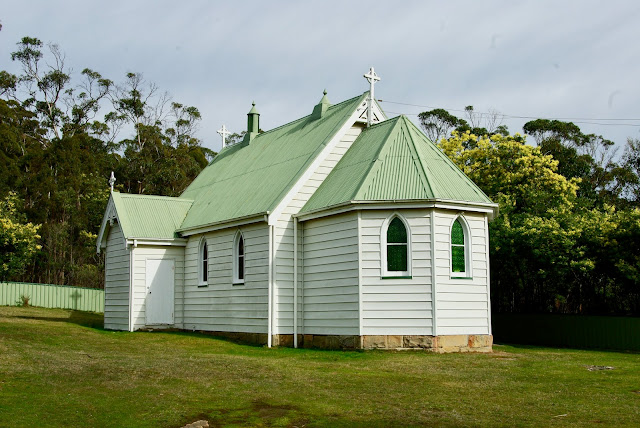No. 556 - Strickland - St Paul's Anglican Church - "A Stupendous Effort"

Strickland is a small isolated settlement in the hills above the River Dee, approximately 15 kilometres northwest of Ouse and the Lyell Highway. It was previously known as Saggy Flats before it was renamed after Sir Gerald Strickland, Governor of Tasmania (1904-9). St Paul’s Anglican church was built in 1910 by Mr Alexander Fyle. It was consecrated in March 1911 however no published report of the ceremony or description of the church seems to have survived. A photograph published in the Tasmanian Mail shows a small timber building capable of accomodating about 60 people. In October 1926 the church was destroyed in a fire as reported in the Mercury: “St. Paul's Church of England at StrickIand, near Ouse, was completely destroyed by fire on Saturday. Members of a working bee were engaged on the ground surrounding the church, clearing it of debris to remove the risk of fire from the building. A pile of rubbish was made about ten yards from the church, and a match put to it....




